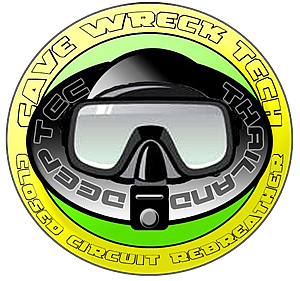ANDI’s Concept of “Training Levels” and Program Scope.

In order to better differentiate the many programs and their scope of training ANDI attaches a “Level of Training”, 1 through 5 for every program involving diving skills. Non-diving oriented courses have no training level. All courses with the same matching level designation follow the same general scope of training and are geared for the same experience level of the participant.
Level 1
To explain this concept further, level 1 designates an introductory program for new divers or divers-in-training. All Level 1 courses will follow these same limitations: 30m max depth, No-Stop-Required profiles, no decompression training, pO2 1.45, pN2 3.2 and information of a less complete or less technical nature. For example, all enriched oxygen mixtures up to 40% may be used by LSU L1 students.
Level 2
Level 2 courses can be expected to be of an “advanced recreational” scope of training. Only two cylinders and up to two gases may be employed to limit the task loading. This is essentially the recreational limits that are accepted world-wide: 40m maximum depth, No-Stop-Required profiles, no decompression training, pO2 1.45, pN2 3.6 and information content of a more complete or more technical nature. For example, the Cavern Diver course is a Level 2 program. A twin-set of cylinders with another gas in an RBS is beyond L2 task loading.
Level 3
Level 3 training encompasses the first level of what has become known as “technical diving”. In general, a more experienced recreational diver is the student prerequisite. Three cylinders and three gas mixes are the task loading limits unless otherwise specified. In addition the training is limited to 40m maximum depth, pO2 1.45, pN2 3.6 or less (depending on the course standards), full decompression training procedures with decompression ceilings limited to 30 minutes (TTM 45 minutes) and exposure limited to pO2 1.6, information content of a complete and technical nature. For example, the Cave Diver course is a Level 3 program. TTM is a useful training in combination with TSD training, and is a prerequisit for the use of a normoxic trimix when doing the L4 training.
Level 4
Training at level 4 is considered an “explorer’s” program. The training expands on the Level 3 material more in practical experience than in theory. The Level 4 program does not extend the depth limits beyond that of a Level 3 program. Depth is not the goal here. The Level 4 course prepares the diver to plan and execute “mission oriented” activities. The training involves operating at the reasonable limits of SafeAir diving and incorporates into the dive plan unlimited gas switches and unlimited decompression. For example, the Cave Explorer course is a Level 4 program. The use of a normoxic trimix instead of a SafeAir mixture is allowed for students with previous TTM training.
Level 5
Level 5 formats are exploration courses that involve the use of other inert gases (in addition to Nitrogen), permit unlimited equipment configurations and unlimited decompression. The operational depth limits are course-limited but usually 100m maximum training depth, pO2 1.45, pN2 3.6, with unlimited decompression ceilings permitted. Oxygen exposures for decompression are still limited to pO2 1.6, and the information content is of the most complete and technical nature. Unlimited cylinders and unlimited gases may be carried by the Level 5 exploration student as specified by the course instructor.
Following the above information, we can at once understand the scope of training and the approximate limitations for a Level 2 or 3 wreck course or a Level 5 rebreather course.
If you have been following the article closely and comparing the various programs and training levels you may note that there is no L4 Rebreather courses. It had been decided that since a rebreather dive at the limits of L2 diving requires the same planning as L3 open-circuit and, L3 rebreather diving involves some serious planning approximating L4 open circuit, the need for a L4 rebreather rating is unnecessary at this time.


